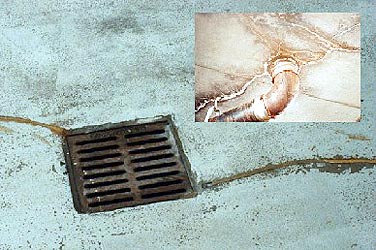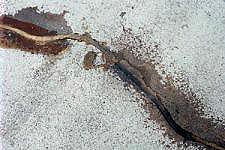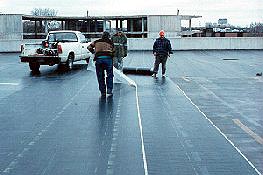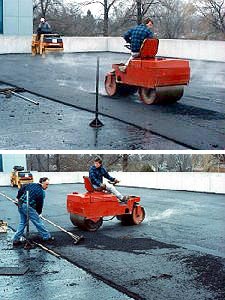Case Study #3
Restoration of a Deteriorated Parking Structure
| Problem: Shortly after construction, drying shrinkage cracks appeared within the single-level suspended deck of a reinforced concrete parking structure. The extensive number of cracks reflected through the thin traffic bearing membrane coating system and the owners were concerned about the potential for accelerated deterioration as well as the fact that salt-laden water was leaking and dripping onto cars parked below. |
 |
 |
Over an almost three-year period several attempts were made to seal the cracks, but they still continued to leak - and more cracks continued to occur. At this time the services of PJ Materials Consultants were retained to investigate why the cracks could not be sealed, to determine why more cracks continued to reflect through the membrane, and to correct the deficiency. |  |
| Solution: The answer was to apply a thick membrane system over the old coating - after testing to ensure that the cold-applied reinforced sheet membrane could adequately bond to the prepare substrate. (This saved over $25,000, compared to removing the old system and applying a new thin system.) For this method of rehabilitation to be effective, it was important that the saturated concrete could adequately dry and this was confirmed by the trapped moisture dripping through the cracks once the right conditions were achieved. The concrete subsequently dried and, after more than 7-years to date, the cracks have remained sealed. |
 |
 |
 |
 |
 |